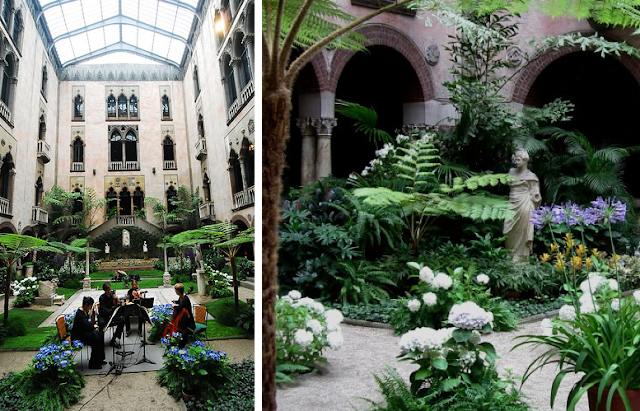The courtyard is what paradise must look like - a menagerie of flowers, plants, fountains, statues and even a mosaic! Part structured European garden (oh, the symmetry!), part wild greenhouse (those fern trees sure aren't native to the region), I felt like I was Alice in Wonderland. Not normally inclined to sketch, I found myself wanting to spend hours doing so, ideally with a cup of tea in hand and classical music in the background. While the floor and walls are plenty on which eyes can feast, the expansive glass paned roof, original to the place, deserves a mention as well. And just when you think you've figured the place out, the east-meets-west vibe kicks in and you come across the mysterious Chinese Room steps that lead down to a secret temple (so secret that I cannot locate a good photo).
The plantings are rotated nine times annually to suit different seasons and holidays. Returning when the museum hangs the nasturtiums in April is a must!
An even bigger mystery is the 1990 heist that resulted in the theft of 13 master paintings by the likes of Vermeer and Degas. The empty frames are a post-mortem tribute.
When strolling these halls, one feels an kinship with the space. After all, the founder, Ms. Isabella, herself, lived here had a hand in every detail of the space, from the building's design to the collection's arrangement. It reminds me of other particularly intimate museums I have visited, mainly the Musée Gustav Moreau and Victor Horta Museum (which I have rambled about before).
By far my favorite piece is John Singer Sargent's El Jaleo, which further exemplifies my love for all things gypsy!
Lastly, to add further contrast to this enigmatic museum, it just got a major new contemporary addition which just opened this year. See more of the modernist fantasticalness here.











No comments:
Post a Comment